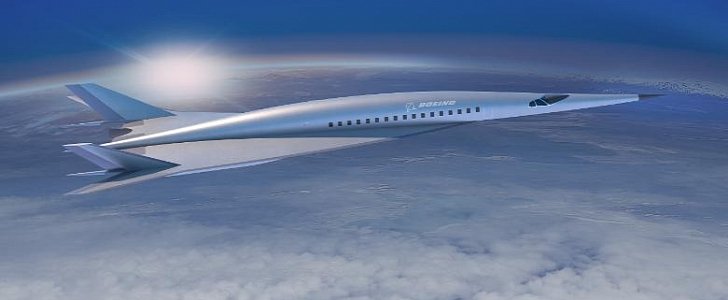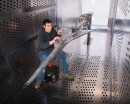Back in the 1970s, the average Joe got a taste of flying at supersonic speeds, just like fighter jet pilots, thanks to the Concorde airplane. When it was launched, Concorde was meant to revolutionize air transportation by taking people from London to New York at Mach 2.04 (1,354 mph or 2,180 km/h).
It took only one crash of the Concorde to effectively take it out of service. When it was completely retired in 2003, it left a gap in the industry no one really believed would get filled again.
Luckily, airplane manufacturers and even space agencies are back at it, trying to design the supersonic airplane of the future. NASA is working on one, the Chinese are too, and Boeing just presented the first rendering of its planned super flyer.
Boeing showed its concept at an American Institute of Aeronautics Aviation event in Atlanta this week. And judging by the looks of it, the new plane might become the most powerful and the fastest passenger aircraft ever created.
Boeing says the plane, which momentarily doesn’t have a name, is supposed to be capable of reaching a speed of up to five times the speed of sound. That’s fast enough to cut travel time from Sydney to London from over 22 hours to as little as three hours or four hours.
“We’re excited about the potential of hypersonic technology to connect the world faster than ever before,” Boeing chief hypersonic scientist Kevin Bowcutt was quoted as saying by 9News.
“Boeing is building upon a foundation of six decades of work designing, developing and flying experimental hypersonic vehicles.”
Unfortunately, Boeing did not say whether it is actively pursuing developing this plane at this time. Estimates are that the most recent appearance of the hypersonic Boeing in the skies above might take place 30 years from now.
Even so, having several companies and countries racing to create supersonic airplanes can mean only one thing: eventually, humanity will get back to commercial supersonic flights.
Luckily, airplane manufacturers and even space agencies are back at it, trying to design the supersonic airplane of the future. NASA is working on one, the Chinese are too, and Boeing just presented the first rendering of its planned super flyer.
Boeing showed its concept at an American Institute of Aeronautics Aviation event in Atlanta this week. And judging by the looks of it, the new plane might become the most powerful and the fastest passenger aircraft ever created.
Boeing says the plane, which momentarily doesn’t have a name, is supposed to be capable of reaching a speed of up to five times the speed of sound. That’s fast enough to cut travel time from Sydney to London from over 22 hours to as little as three hours or four hours.
“We’re excited about the potential of hypersonic technology to connect the world faster than ever before,” Boeing chief hypersonic scientist Kevin Bowcutt was quoted as saying by 9News.
“Boeing is building upon a foundation of six decades of work designing, developing and flying experimental hypersonic vehicles.”
Unfortunately, Boeing did not say whether it is actively pursuing developing this plane at this time. Estimates are that the most recent appearance of the hypersonic Boeing in the skies above might take place 30 years from now.
Even so, having several companies and countries racing to create supersonic airplanes can mean only one thing: eventually, humanity will get back to commercial supersonic flights.





